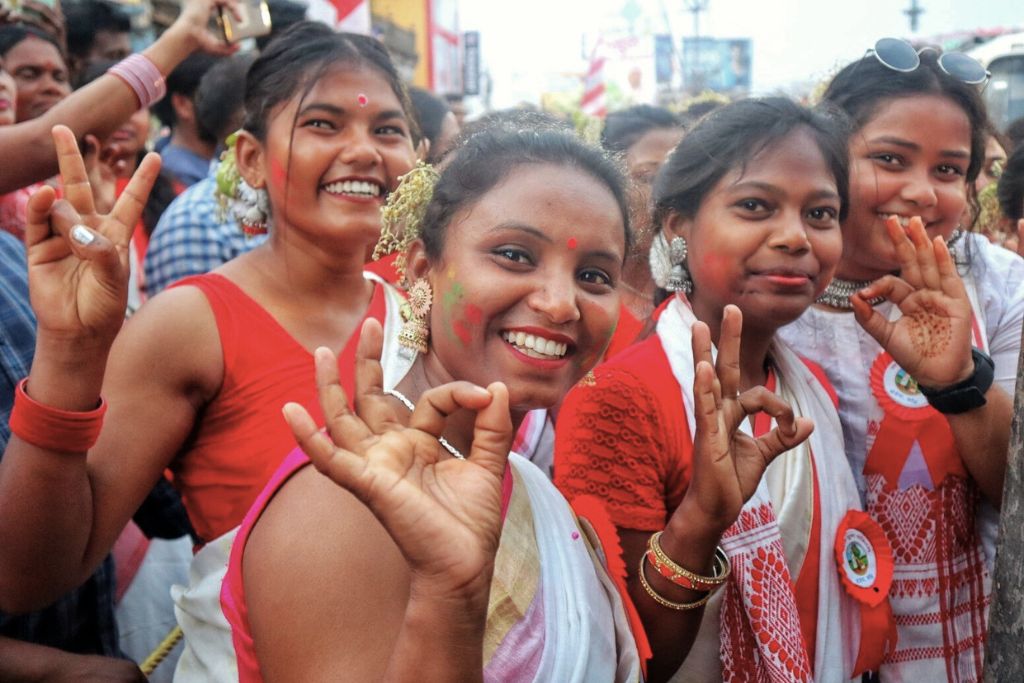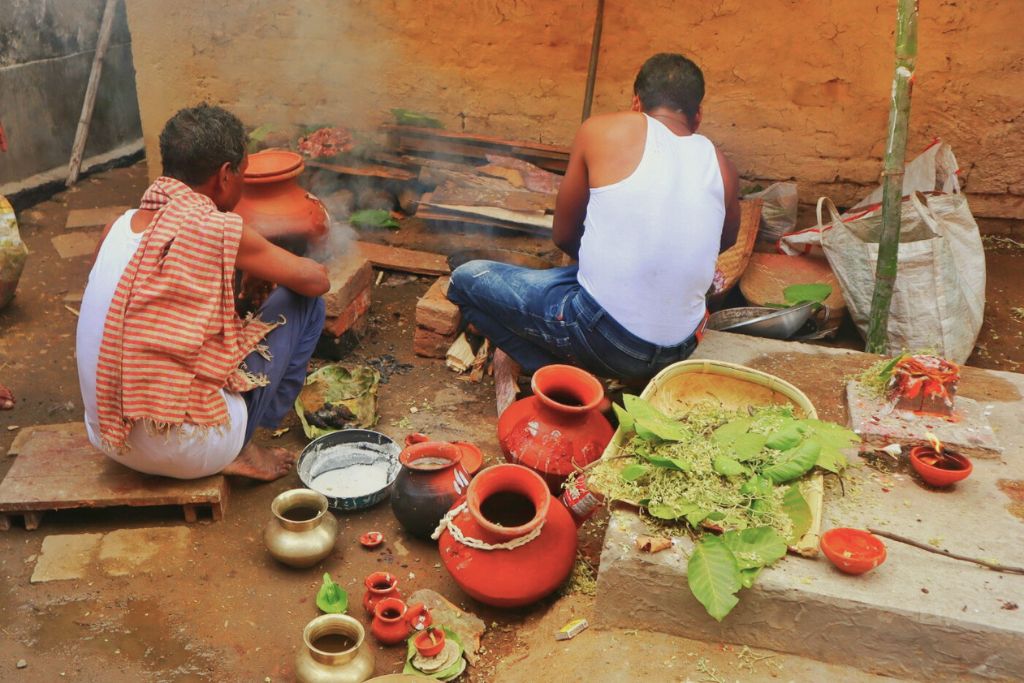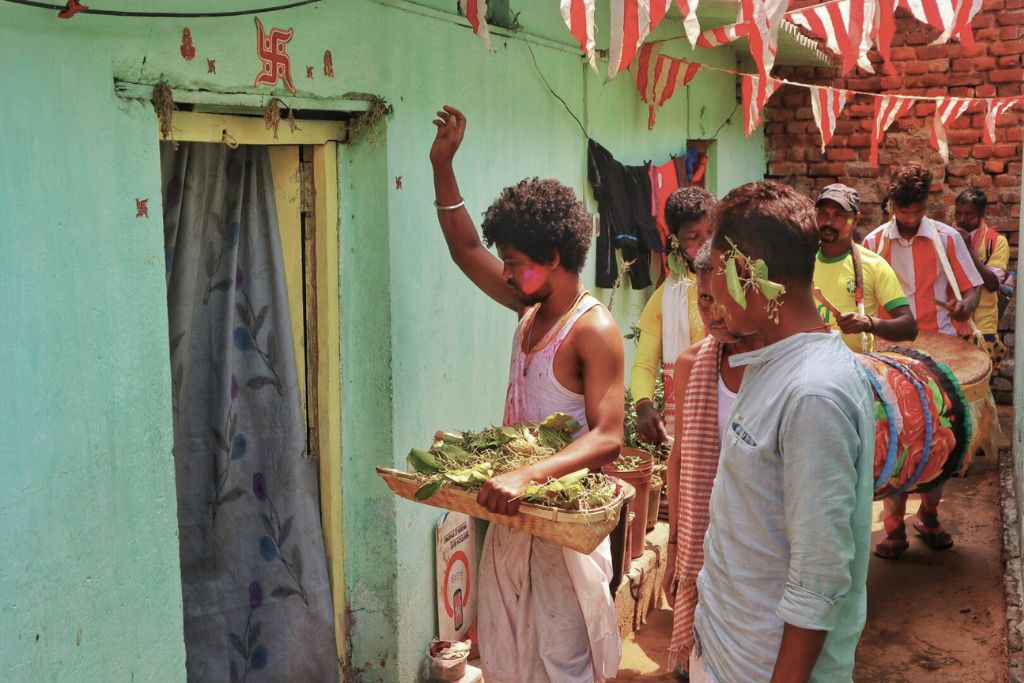
Get weather predictions at Jharkhand’s Sarhul festival
Celebrated to mark the new year by the tribal groups of Jharkhand, Sarhul is a three-day event observed after the new moon during the Hindu month of Chaitra (March 22 to April 20 this year). What essentially marks the arrival of spring also sees the prediction of rain by the pahan (tribal priest) only after which the people plant their crops. To mark the celebrations, members of the tribal communities in villages and towns wear traditional clothes and dance as they take out processions.
Trigger warning: The article mentions animal sacrifice in detail.
On the rusa, the first day of Sarhul, a pahan fills water in a pot from the holy spring and keeps it in the akhra – a spot where all important tribal events take place. People go to the forests to collect sarai (Shorea robusta) flowers, and the pahan or the eldest person of the household catches crabs in the pond to worship. They say that nature is worshiped in the form of a virgin girl on the day of Sarhul, therefore it is necessary that the crab that is worshiped should be female. No one works in the fields on this day (Photo by Monika Marandi)
The first day also requires the women of the house to observe a fast. On this day, puan – a sweet dish – is fried and served as prasad or sacrament. Only the women in fasting or the pahan can fry the puan. This sweet dish is fried with bare hands without using any utensils. Roti (bread) is prepared using mustard oil exclusively on this day. Only sarai leaves are used for sitting, for distributing roti and for eating (Photo by Monika Marandi)
On the second day of sarhul, the pahan predicts the upcoming monsoon by looking at the pot in which he filled water on Day 1. If the pot’s water has dried up, there is a possibility of drought that year and if there is no difference in the water level, then there could be good rain. If the water from the pot spills, then he can even predict the direction from which the rain will come. If the water falls from the west, then the rain will come from the west and if the water falls from the north, then the rain is predicted to arrive from that direction. The tribals of Jharkhand have been relying on this method to plan their farming activities for the year, for centuries (Photo by Monika Marandi)
The rangani murgi (a type of hen) is sacrificed after the prediction is fulfilled. Later crabs and chicken are cooked as prasad. This puja is done in the courtyard of the house. Prasad is not made by women, only the pahan and other men are supposed to cook and eat this prasad. Five new seasonal vegetables — lal saag (amaranthus dubius), koinar saag (bauhinia variegata), putkal saag (ficus geniculata), sonti (drumstick), and kathal (jackfruit) are prepared alongside (Photo by Monika Marandi)
On the evening of the second day, people take out a procession and come on the streets. All the women dress up in traditional red coloured sarees and the men are also seen in their traditional attire. Within no time, the entire city is covered in red and white. Everyone celebrates together (Photo by Aditya Sen)
People dance as they walk for miles. The procession also witnesses people from tribal communities singing folk songs using traditional musical instruments. But over time, outdoor speakers have also taken an important place. Special attention is paid to the safety of women during processions so that they can also enjoy Sarhul to the fullest without any hassle (Photo by Aditya Sen)
Phool khosi is celebrated on the third and last day of Sarhul. A special puja (prayer) is performed on this day in which the hen sacrifice is made in one corner of the house. No one is allowed to enter that room except the pahan and his companions. The hen is not slaughtered, but is killed by being banged against the wall. Two corners are designated on the ground, where offerings are made. One corner is for the ancestors and the other is for those who died prematurely (Photo by Monika Marandi)
After the puja is over, the pahan goes to every house in his village and blesses the family members by placing sarai flowers on their doors and putting some gulal (colour powder) on their face. On the arrival of the pahan, the women of the household he is visiting wash his feet and wish Sarhul by applying gulal to his face. The Sarhul festival, which is celebrated with great pomp, ends with a wish for peace (Photo by Monika Marandi)
The lead image at the top shows women wearing traditional clothes while taking out processions in Jharkhand (Photo by Monika Marandi)
Reporting by Monika Marandi. She is an independent journalist based in Delhi. She is a Rural Media Fellow 2022 at Youth Hub, Village Square.







